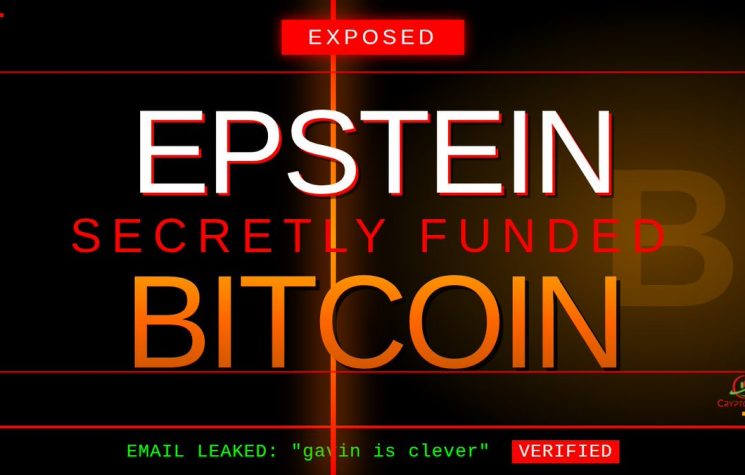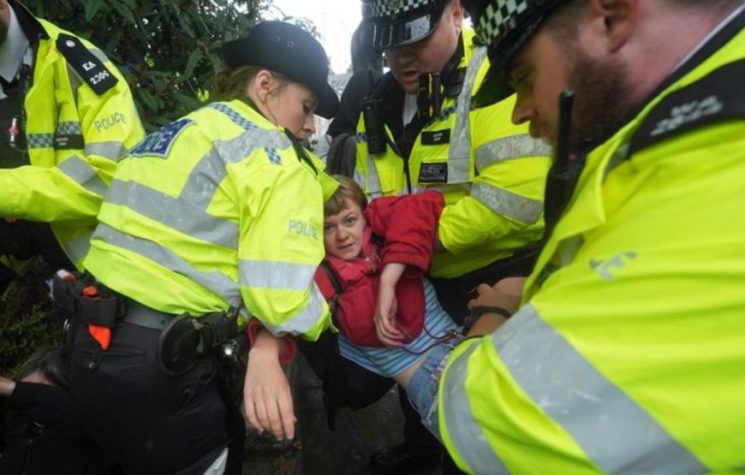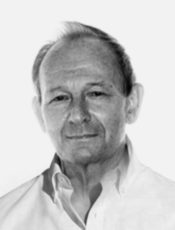There are moments when collectively, as well as individually, we humans reach to a fork in the road. We can dither undecided at its bisection for a while, but ultimately, we must elect to take one of the paths ahead.
Many today feel the void, a sense impending change. The Coronavirus has made us acutely aware of the fissures that are manifest in all aspects of our societies. A sense that the post-war era – perhaps even, the European Enlightenment moment itself – has run its course; that the latter somehow has failed us. Some passionately – even a tad hysterically – wish to extend the familiar present: to keep America’s founding values. But many more are disaffected. They want our present to be radically changed (or even smashed) – but all wonder what may come next.
What is already clear is that there can be no ‘return to normal’. That is no longer available. On the table are truly explosive proposals for either a material tech utopia (i.e. ‘The Great Reset’); or, from the wokes, an Gramsci-style, bottom-up cultural insurgency to overthrow the world. (This latter is not really an option on the immediate table). Others seem readier to take arms (at least in America), against both notions, in pursuit of Trump’s ‘golden age’ virtues and identity: a struggle to preserve traditional Protestant ethics.
Today, certain western élites are trying to implement a ‘braking action’ to this cascade of ‘disorders’ that are emerging from popular discontent and structural breakdown. These disorders, they fear, fuel populism and nationalist sentiment, and therefore threaten the sustainability of their central ‘myth’ – the notion of a global humanity grounded in common ‘values’, pursuing an itinerary towards a tech-led, global order and governance.
They see risk. They can observe that ‘other’ values, opposed to universalism, are arising from deep layers of human experience and history. These are being perfunctorily dismissed by the Establishment as ‘populism’. But, under the palimpsest of populism, we also are witnessing old, eternal values, returning in a new, fecund form.
Most of today’s ‘discontented’ will be oblivious to the history to the values they espouse, and may never seriously address the deeper layers of thinking in which they inhere. But that is not the point – seeds are being set into our collective psyche.
What makes the choice of path such a source of tension is that we are being told repeatedly that two paths are radically dissimilar – even at war with each other; whereas effectively, they share certain essential characteristics. They have a similar end-point. There is little or no choice at all, except in terms of the political illusion into which each path has been folded.
Both paths are grounded in a consensus expressed most clearly by the World Economic Forum, which ‘Davos’ chair, Klaus Schwab, has described as The Fourth Industrial Revolution (4IR):
“The first revolution, which began in the 1700s, used water and steam power to mechanise production. The second, between the 1800s and the First World War, progressed to electric power to create the mass production of goods. The third used electronics and information technology to begin the process of automating production. The fourth revolution seeks to build on the third, and is dubbed as a ‘digital revolution’.
Schwab describes this as a ‘fusion of technologies’ that embodies the physical, digital and biological spheres. Technological breakthroughs will include fields such as artificial intelligence, robotics, autonomous vehicles, 3-D printing, nanotechnology, biotechnology, energy storage and quantum computing…”.
The world, Schwab says, can expect the revolution to be a symbiosis between micro-organisms, the human body, the products people consume, and the buildings we inhabit. Human ‘future’ thus is set to converge with both the digital and biological worlds – and to become part of it, the Davos Strategic Intelligence Platform foretells. This is very serious ‘stuff’ – an attempt to blur the frontier between robot and human, just as that separating male and female has been turned opaque.
If 4IR enjoys a certain acceptance across western élites (including within Team Trump), what separates the latter from the true globalists are the add-ons: In 2014, Christine Lagarde (then IMF head) called for a ‘reset’ of monetary policy (in the face of “bubbles growing here and there”); the financial sector regulatory environment, and structural reforms of global economies to deal with stagnant growth and unemployment. The following year, the UN laid out Agenda 2030 and the Paris Climate Accord was launched. And in 2016 the WEF ran with the 4IR narrative (setting up expert platforms to take the project forward). Then in June this year, WEF launched The Great Reset.
In short, the ‘house of the new world order’ was being built from the bottom up, to accomplish an end run around national sovereignty, eroding it piece by piece, rather than through frontal attack (just as the CFR journal had advocated as far back as 1974). It is this end run around national sovereignty – America’s especially – that sticks in Trump and his supporters’ claw.
With global unemployment spiking as a result of the Corononavirus lockdowns, and with the U.S. in full spate ‘Cultural Revolution’, the globalists have seized the moment: The 4IR fusion of technologies, together with the climate and monetary ‘complementary Resets’, were launched as last month’s Great Reset.
Even the EU (Covid) Recovery Fund accord settled last week is very much a part with The Reset blueprint (as Ambrose Pritchard-Evans has noted):
“The significance is political. The fund is a profound change in the structure and character of the European Project. The Commission will have powers to raise large funds on the capital markets for the first time, and to direct how the spending is allocated, turning this strange hybrid creature into an even more extraordinary institution.
“Where else in the world does a single unelected body have the “right of initiative” on legislation, and the executive powers of a proto-government, and the spending prerogatives of a parliament, all wrapped in one?
“It is Caesaropapist, bordering on totalitarian in constitutional terms, mostly unchecked by meaningful parliamentary oversight … [and it fits with] one consistent theme in the countless summits that I covered as Brussels correspondent. They always nudged forward the Monnet agenda by means of creepage, precedent, and the establishment of facts on the ground. The democratic consent for this erosion of sovereign national control was thinner than EU enthusiasts ever cared to admit”.
Yes, yet wholly in line with Davos thinking (Chair, Schwab again): “Businesses will have no alternative but to adapt … Governments, too, must transform. Whilst they may acquire new technological powers to ‘increase their control over populations’ (in the shape of surveillance systems and digital infrastructure control), they will also have to keep up with the pace of technological change”. It will disrupt everything. Huge social tensions will result. Nevertheless, “Ready or not”, Schwab warns, “a new world is upon us”.
According to Schwab, 4IR will ‘lead to a supply-side miracle, with long-term corporate gains in efficiency and productivity’. The cost of doing business will recede. Yes, there might be fewer CEO oligarchs (resulting from consolidation), but those who remain incontrovertibly will be the new ‘Elect’, managing the world through their digital and AI tools.
But what will Europe or the U.S. do with the 20% or 40% of the workforce that will no longer be required (or who prove to be technologically inadequate) in this new, robotic world? No problem, Schwab responds: the redundant workforce will be given ‘their safety net’. (i.e. universal basic income).
So, back to the issue posed of this ‘fork in the road’ being essentially no true bifurcation? Well, on the one hand, the very enablers of the cultural war in the U.S., (i.e. U.S. Big Philanthropy; Big Tech and Big Silicon Valley), are, at the same time, enabling Davos, and the ‘Great Reset’ initiative. They are one and the same.
That is to say, those helping roil the U.S. with its cultural dismemberment, are simultaneously working to advance the EU centralisation project (which would, they expect, ultimately repress the woke revolution through big data social-credit, and digital currency control).
This ideological shift needs to be absorbed: Big Philanthropy, Big Tech and Big CEOs are with the ‘woke’ and BLM militants, and helping to empower them (some of these foundations have resources that eclipse those of states). But they are also with ‘Davos’ too. It is a House divided against itself, (but whose purpose again is an end-run around Trump, and his sovereignty-ist base).
The young Woke generation have been set to cancel America’s cultural identity as they imagine it, (and as Christopher Lasch foresaw in his Revolt of the Élite, these 20/30+ year olds view American culture darkly: “A nation technologically backward, politically reactionary, repressive in its sexual morality, middle-brow in its tastes, smug and complacent, dull and dowdy”).
Why then should Big Funders and Big Business in the U.S. enable a movement that holds American founding principles in contempt?
Well, simply put: The EU is the ideal vehicle for building a new 4IR aristocratic oligarchy. Such a construct, in fact, has always been latent within the EU project, as Ambrose Pritchard–Evans noted, whereas the U.S. – as these Davos enablers imagine it – is not. U.S. legal and cultural structures are antithetical. But the corollary of such assessment is plain: Europe is destined, in this view, as the centre of western power. And the U.S. loses it.
Trump and others of the American élite, but especially the military, unreservedly accept 4IR to be the global ‘game-changer’, but are be-damned if they will permit American primacy to slip away to Europe – let alone China. Hence Trump’s ‘war’ with Merkel (i.e. over Nordstream 2), whom he probably suspects would love to be the new Emir of the West. It explains Trump’s targeting of the CCP, too.
The U.S. can do one of two things: It can attempt to leap-frog China on AI and big data, or work in co-operation with it. Apparently, Trump wants that the U.S. leap-frog China, and to present this aim as the electoral platform for November: Winning the trade war against China. But to succeed, he must disrupt both China and the EU. What if China and the EU began to collude? Geo-political primacy – in this narrative – will rest with he who controls tech standards and licensing rules, over coming decades.
The somewhat dirty little secret to this plan is that, were the U.S. to succeed in seizing the commanding heights of global Big Tech, it would still not resolve the issue of what to do with 20% of Americans automated and robotised out of their jobs. Many of these will be blue collar Trump supporters. Winning the ‘tech war’ will not bring those lost jobs back onshore. Rather the automation envisaged in 4IR will ‘cancel’ even more of them.
In sum, both the Trump and the Globalist paths both lead to soft-tech feudalism – unemployment and social controls: a Hobson’s Choice. But with Trump, his supporters hope, America would still be the world’s No. 1 and retain some Christian ethos (such as the centrality of family); but other primordial ‘liberal’ virtues such as sturdy independence, freedom and disdain for centralised government control would need be sacrificed to the hungry beast of roboticised industry. A glimpse at today’s working practices at Amazon would give a foretaste.
Francis Fukuyama’s celebrated End of History essay, “is ordinarily read as the apologia for rampant capitalism and Anglo-American interventions in the Middle East”, but that would be wrong, Gavin Jacobson notes.
Rather, Fukuyama – widely regarded as the apostle preaching the arrival of the American-led New World Order – however, did not cry out ‘Hosanna!’ to the NWO (as often assumed). On the contrary: he said that it might lead to popular revolt.
Indeed, the future, Fukuyama wrote, risked becoming a “life of masterless slavery”, a world of civic putrefaction and cultural torpor, exfoliated of all contingency and complication. “The last men” would be reduced to Homo Economicus, guided solely by the rituals of consumption, and shorn of the animating virtues and heroic drives that propelled history forward”.
Fukuyama warned that people would either accept this state of affairs, or more likely, would revolt against the tedium of their own existence. Previous ‘Grand Visions’ (such as Soviet industialisation) mostly have ended badly.
We happen to know some details about initiation among ancient Greeks, particularly among the Greeks in southern Italy. And perhaps the most famous detail is that, after the initiates had made their journey into the underworld, they were confronted with a choice between two paths. To be more precise, they arrived at the famous fork in the road, where a major decision was waiting to be made as to which way to go.
One of them, is the path that only the initiate (who now, is ‘aware’) is able to follow: that leads to Life – real life. The other is the path to forgetfulness – of a descent towards sleep and ultimately to torpor, as one of the ‘walking dead’.
Knowledge about these paths customarily was maintained as a mystery. The details were hidden in the riddles of initiation. But these latter were all intended to hint to initiates at a reality very different from the one they took for granted. And the clue to ‘that’ at which the ancients were hinting, lies with a path leading to life, rather than one compelling us to hunt after some illusory ‘realness’ – whether it is the compelling myth of endless, debt-led prosperity, or some Orwellian universal techno-future. Both artifice are powerful, in their own way.
It is not however a matter of which artifice is more, or less close, to real, than any other. The point is: you cannot approach, cannot get to, the real in this way. It is no ‘path’. These are just two illusions; two illusory ‘reals’, amongst many. There is no Schwabian – ‘ready or not’, ‘new world’ about to descend upon us. Just, maybe a different way of being human, amidst digital tools.
The ‘other path’ – a path less mentioned – is a return to simplicity. And to finding an inner ‘sovereignty’.



























































